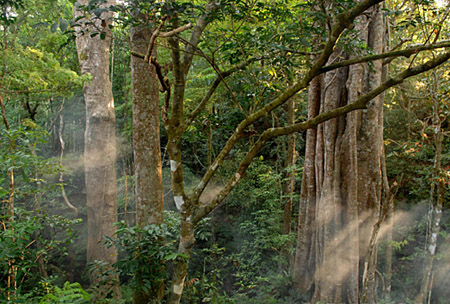When an area is protected, many jobs are created for the local people. Parks rangers are needed to manage the park and guides are needed to guide tourists. The indigenous people of the rainforests have so much knowledge about the rainforests that they make perfect workers for these jobs. Local people can also sell many of their crafts at markets to the tourists that come to visit. Through proper management, tourism can be used without endangering rainforests and can help to provide rainforest protection.
Also, there are now eco-friendly companies. The timber in the rainforest was being clear cut, while that does still happen, in protected areas selective cutting has been used to allow for an eco-friendly way to keep the timber being a sustainable resource.


Below is a list from the Mongabay website of things that we all can do to help protect the rainforests:
Don't buy products made from wildlife skins
Don't buy exotic pets that have been collected from the wild. You can ask pet stores whether animals are "wild-caught" or "captive bred." "Captive bred" animals are more friendly for the environment
Buy recycled paper.
Don't buy wood products from Indonesia, Malaysia, Brazil, or Africa unless you know they come from eco-friendly suppliers. A good way to know if wood is rainforest-safe is if it has a "certification label." An example of a certification label is "FSC-certified" which means the wood comes from sustainably managed forests.
Learn more about rainforests and the plants and animals that live in them. Tell your friends and family why rainforests are important.









